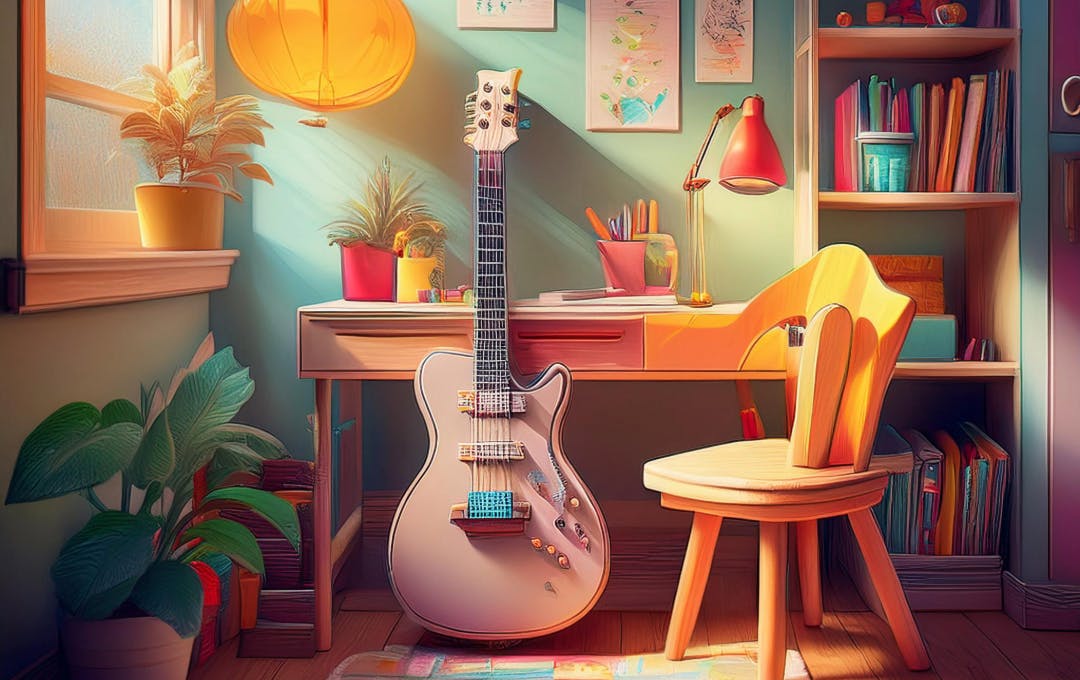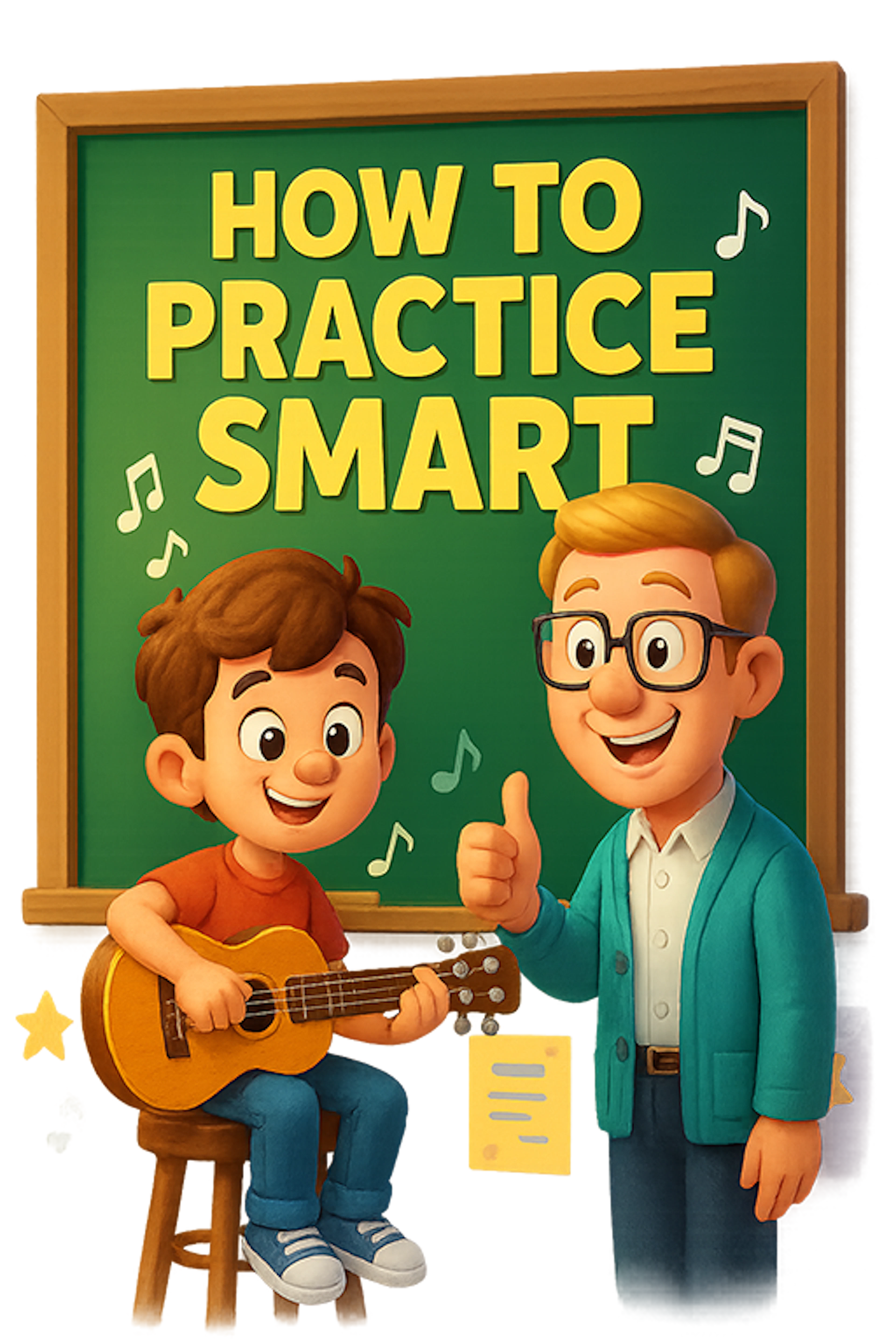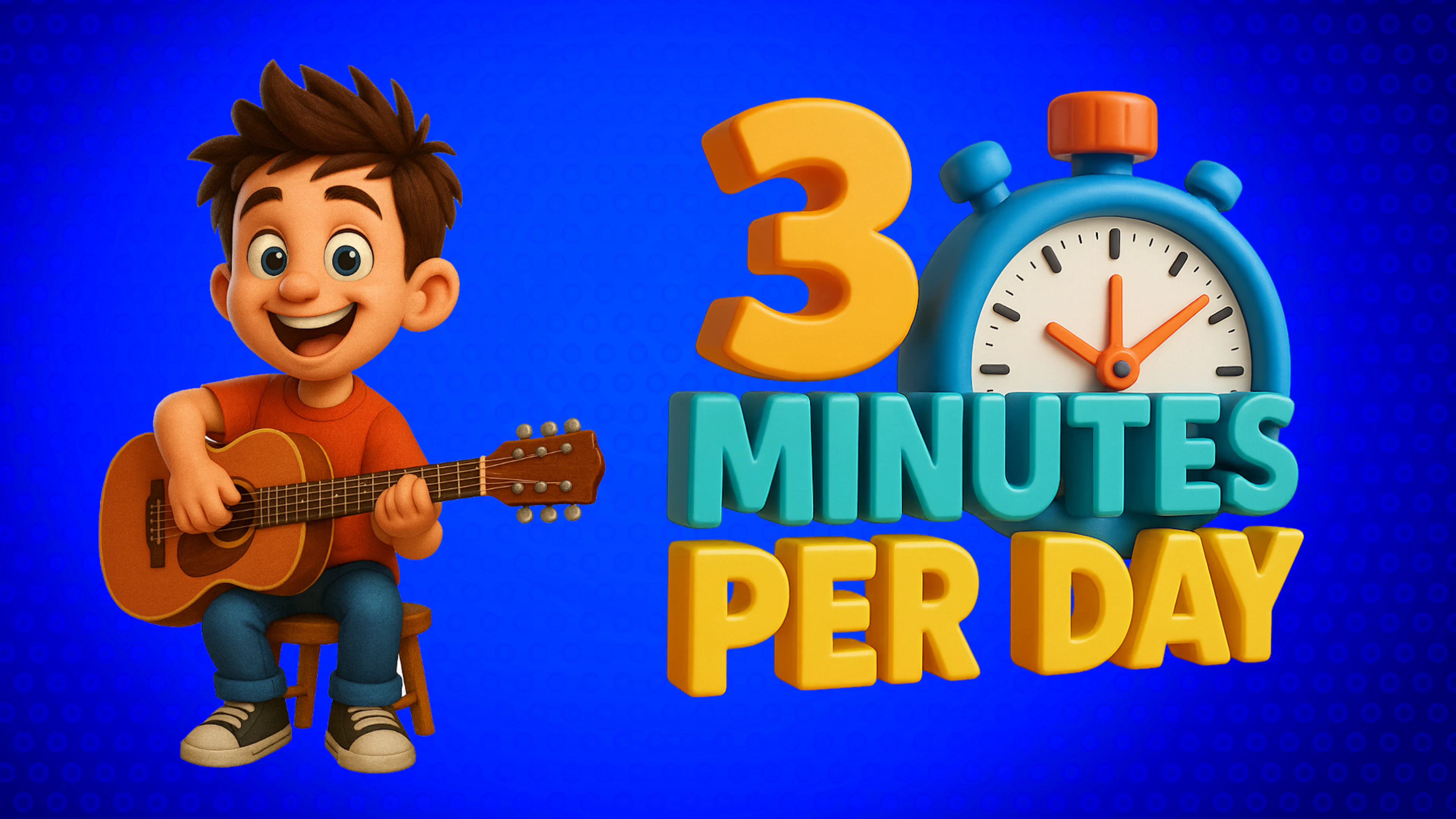Guitar lessons For A 5yr Old- Creating a Fun Practice Routine
Learning guitar should feel like playtime for your little rockstar! Here's how to create an engaging practice routine that will keep your 5-year-old excited about making music.

Every child is unique in their own way and these tips will work for some and not for others. For example some kids may want to practice 2-3 times day and this where the 10 minute rule is very effective.
The Magic 10-Minutes Rule
Young children have shorter attention spans, so keeping practice sessions brief but regular is often the best method to follow. Generally speaking A 5 year old will have a shorter attention span than a 8yr old but this can vary depending on the child.
- Start with just 10 minutes daily
- Look for small victories
- Practice at the same time each day, like after breakfast or before dinner.
Setting Up Your Practice Space
Create a Special Music Corner

- Designate a cozy practice spot
- Keep the guitar easily accessible
- Use a child-sized chair
- Display a colorful practice chart
Why a Dedicated Practice Space Matters
A well-organised practice space helps your 5-year-old develop good habits and makes guitar practice feel special. Think of it as their own musical clubhouse where they can explore, make mistakes, and grow as a musician.
The Right Location
- Choose a quiet room with a door that closes
- Keep the space free from toys and other distractions
- Ensure good lighting (natural light is best)
- Consider room temperature - not too hot or cold
Essential Equipment Setup
- Place guitar on a stable, child-sized stand
- Position stand where it's easily accessible
- Keep the guitar tuned and ready to play
- Remember: a guitar in its case rarely gets played!
Proper Seating
- Use a chair that allows feet to rest flat on the floor
- Ensure back support for proper posture
- Avoid chairs that swivel or roll
Learning Materials Organisation
- A sturdy music stand at eye level
- Set up a tablet mount or stand for video lessons
- Keep practice charts visible on the wall
- Store picks and other accessories within reach
Privacy Matters
- A private space allows freedom to experiment
- Repetition is crucial for learning
- Young players need to feel comfortable making mistakes
- Practice isn't performance - privacy reduces self-consciousness
Organisation Tips
- Create a designated spot for each item
- Use colorful labels for young learners
- Keep practice logs and sticker charts visible
Technology Integration
Screen Setup
- Mount tablet at eye level
- Position screen to avoid neck strain
- Keep charging cables organized
- Ensure stable internet connection
Making Practice Comfortable
- Privacy allows for guilt-free repetition
- Encourage playing passages multiple times
- Celebrate the process of improvement
- Create a judgment-free zone
Practice Chart Heroes
Create a fun reward system:
- Use stickers for completed practice sessions
- Draw a guitar hero path
- Earn small rewards after 5 sessions
Here's an example of one of our Kids Guitar Dojo wall charts we use in our premium course

Mini-Games for Tiny Hands
Spider Walks
- Walk fingers up and down the neck
- Name each fret as you go
- Pretend fingers are tiny spiders
Making Progress Fun
Weekly Goals Should Be:
- Simple and achievable
- Focused on having fun
- Celebrated with enthusiasm
- Tracked with pictures or drawings

Parent's Corner
Supporting Your Young Guitarist:
- Keep expectations age-appropriate
- Focus on enjoyment over perfection
- Celebrate small victories
- Join in the fun when possible
Progress Markers
Look for these signs of development:
✓ Holds guitar comfortably
✓ Recognizes different strings
✓ Shows interest in making music
✓ Enjoys practice time
Daily Practice Schedule
Sample 10-Minute Routine:
Important Tips
Do:
- Keep it playful
- Use lots of praise
- Include movement
- Make silly sounds
Don't:
- Force practice when tired
- Focus on perfection
- Compare with others
- Skip the celebration
Friendly Rules To Follow
Remember these as simple guidelines:
- Try and supervise practice time
- Check guitar size is appropriate
- Ensure proper sitting position
- Keep guitar properly tuned
When to Take Breaks
Watch for these signals:
- Fidgeting increases
- Attention wanders
- Shows frustration
- Appears tired
Celebrating Progress
Ways to Celebrate:
- Wall Charts Certificates
- Mini concerts for family
- Recording videos
- Colouring In Music Games with Quiz
Next Steps
Once basic routines are established:
- Introduce simple songs
- Add new games
- Expand practice time gradually
- Include favorite music
Remember, at age 5, the goal is to build a positive relationship with music and the guitar. Keep everything light, fun, and full of imagination. Success comes from enjoying the journey!



